Outstanding scientist Zinovy L. Rabinovich
He was a very charming, kind, sympathetic and cleverest person. A talented scientist who was enthusiastic about teaching others. Professor, Doctor of Technical Sciences, Head of the Department of the Institute of Cybernetics, Honored Scientist of Ukraine, laureate of the State Prize of Ukraine. One of the authors of the first electronic computer in the USSR with a program stored in memory. For more than 60 years he was engaged in scientific activities, participated in the birth and development of Soviet digital computing technology and made an invaluable contribution to the theory of electronic digital computers. Zinovy Lvovich participated in the design of external devices of MESM - the first electronic computer in the continental Europe and the USSR with a program stored in memory. He is also the chief designer of the Specialized Electronic Calculating Machine (SESM) for solving systems of linear algebraic equations. This computer has become the forerunner of vector processors.
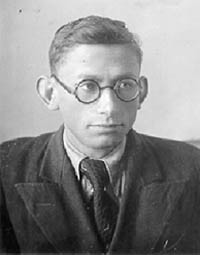
It all started on the night of August 1, 1918 in the city of Kiev, when the boy Zinovy was born in the family of a doctor and nurse. After the birth of their son, parents rent an apartment on Demeevka (then, the outskirts of Kiev). The father, as a doctor, enjoys great prestige and love of the proletariat. Education, as Zinovy L'vovich recalled later, was “classical and, at the same time, multi-polar, in which the“ classics ”mixed with the new Soviet trends.
')
Zinovy Lvovich recalls:
Subsequently, the pro-Soviet upbringing in the family, then the school principles “as it should be” and the tendency to reasoning and practical comprehension from early childhood, will serve as a choice to devote themselves to creative research activities.
After graduation, Rabinovich enters the Kiev Polytechnic Institute, which graduated with honors in 1941. Despite the fact that on the night of June 22 Kiev was bombed, in the morning he was on a call from the institute going to defend his graduation project. During his diploma defense, an air-raid alarm sounds and almost the entire commission moves to an air-raid shelter, with the exception of a few people who listen to and evaluate the work as “excellent”.
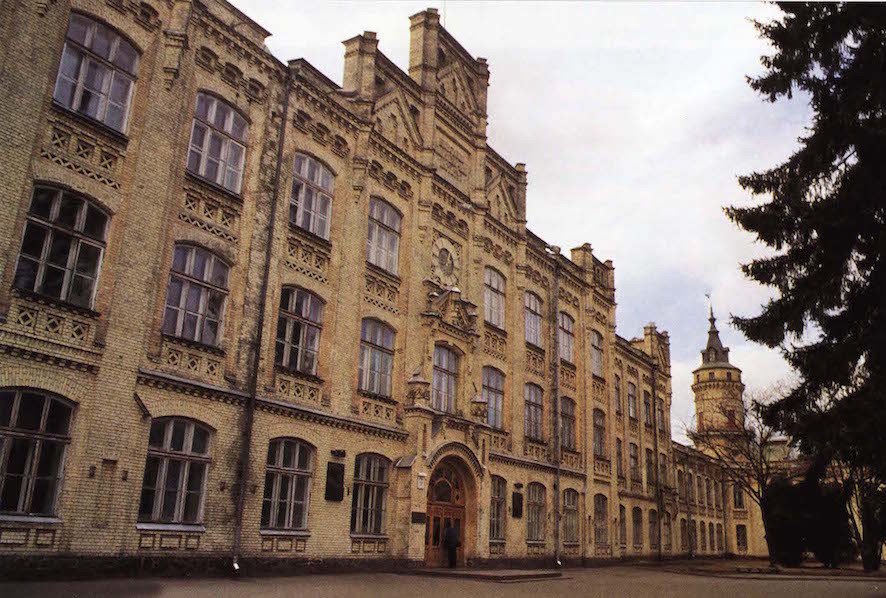
Kiev Polytechnic Institute
In a couple of days, according to the mobilization, Zinovy Lvovich is sent to the defense enterprise at the new MAP plant in Kirov. He gets into the serial design bureau (SKB), where he translates product documentation into working documentation in accordance with factory standards, assists in the development of these products in serial production and accompanies their planned production right up to military acceptance. And all this takes place in extremely intense mode due to wartime conditions. At the beginning of the war, during the development of products, designers were even equipped with sleeping places in the red corners of the shops, so that they could be at the factory at night. The product, which led Zinovy Lvovich and made him redesign and modernization, was not only high quality, but also the highest quality among the whole complex of products of the plant, which allowed him to improve aviation equipment. Later he will be awarded the medal "For Valiant Labor in the Great Patriotic War of 1941-1945."
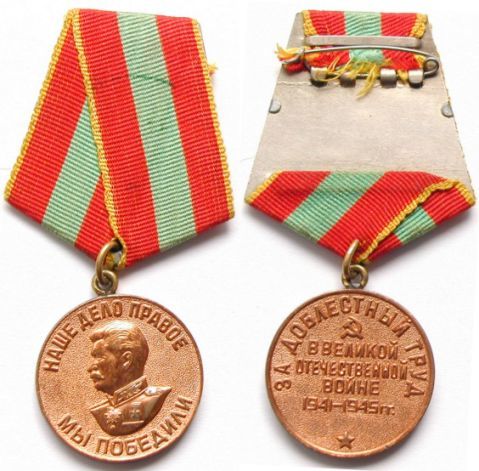
Medal "For Valiant Labor in the Great Patriotic War of 1941-1945"
After the end of the war, the plant still works for some time in the same mode, but then peaceful production is added to production, the former enormous tension is reduced, the work rhythm becomes calm, more free time appears. At the same time, Zinovy Lvovich has a desire for scientific work. Just at this time, Stalin issued an order for unhindered leave from defense plants and from the army of persons admitted to the postgraduate and adjunct courses. And it helps him make the final decision.
In 1947, Rabinovich returned to Kiev, enrolling in graduate school at the Institute of Thermal Power Engineering of the Academy of Sciences of the Ukrainian SSR, from which, on the arrival of S. A. Lebedev, in 1947 the Institute of Electrical Engineering distinguished itself.
A production worker from distant Kirov immediately passes his candidate exams. This makes a favorable impression. He especially liked Sergei Alekseevich Lebedev and was admitted to him as a graduate school. But at the factory, Zinoviy Lvovich was persuaded to work for another year and was released only at the insistence of the chief military representative. The laboratory, to which Rabinovich came, was engaged in the development of basic tube components of electronic automatics, but he was immediately introduced by Sergey Alekseevich into the beginning contract work on the creation of an installation of semi-natural modeling of aircraft systems. The installation was to consist of a platform with three degrees of freedom, an analog computer that simulates the movement of the aircraft, and a tracking precision system that accurately transmits impacts from the model to the engine of the platform. Zinoviy Lvovich had no special group as such, but he was helped by I. P. Okulov, N. I. Furman and R. Ya. Chernyak.
The idea and the main principles of the construction of this installation were highly appreciated in the journal Automation and Remote Control as an outstanding achievement by S. A. Lebedev. Much later, Rabinovich Z. L., with details previously subject to secrecy, will set forth this work in his writings about S. A. Lebedev, to whom he treated with great respect and love. And as he himself wrote in his memoirs, “in addressing him I felt as if I was addressing God, as a believing person does in his mind, without embarrassment, directly.”
Beginning in 1948, together with work on the installation, S. Lebedev entrusts Rabinovich Z.L. other, auxiliary works, when creating the first Soviet computer MESM (Small electronic counting machine). This is the creation of a stand for the selection of lamps with the same characteristics, systems for automatic stabilization of the lamp heat, etc.
And from the end of 1949, he joined the development of electronic computing equipment - high-speed elemental structures, sequential arithmetic devices, etc., for which he was allocated a small group of engineers and technicians. Also, Rabinovich is given a separate work on the development of a digital printing output device, in which I. T. Parkhomenko took an active part. The development of this device related specifically to the creation of the MESM itself.
To create the MESM it was necessary to have a room of about 150 square meters And about the same - for generators, batteries, control automation. It was necessary to place workshops and other services somewhere. Finding such a building in Kiev destroyed by war was very difficult. This room was allocated near Kiev, in the building of the former hotel at the monastery in Feofaniya. Despite the fact that the building was in disrepair, it was quickly repaired. The MESM was created on the first two floors, and the third hostel was arranged for employees. Work was in full swing. Every day from Kiev to the village of employees drove a dedicated bus. But at 17 o'clock he was leaving back. Therefore, people stayed at work for several days or even weeks. Z.L. Rabinovich, who returned home only on weekends, was no exception.
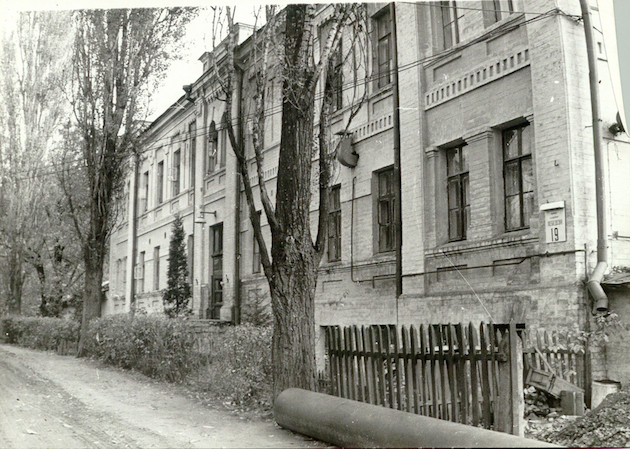
The building in the suburbs of Kiev - Feofaniya, where Lebedev's laboratory was located and the MESM was built
On November 6, 1950, the trial operation of MESM begins, and its transformation from a working model into a regularly working sample. The solution of the control problem was recorded by a special act, in which, after the signature of S. A. Lebedev and E. A. Shkabary, there was the signature of Rabinovich himself. But the car was still being finalized and only on December 25, 1951 was handed over to the state commission. Lebedev recommends Rabinovich to lead the development of the SECM, and he comes to Kiev to advise on these developments.
For 3 years (1948 - 1951), the MESM universal machine was created, and a year more was needed to create the SESM, which was commissioned in 1956 and became the first computer in Europe with a vector processor.
In SESM a whole range of new products was applied for that time. It was used by customers for solving a number of tasks and entered with the MESM into the main equipment of the Computing Center of the Academy of Sciences of the Ukrainian SSR, and then was transferred for training purposes to the radio engineering college.
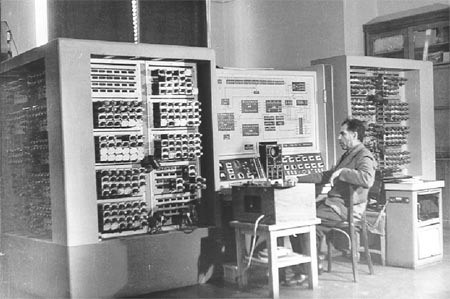
Specialized electronic counting machine SESM
Z. L. Rabinovich believed that only after the SESM he fully asserted himself as a high-class specialist in the field of digital computing, and this circumstance, of course, greatly influenced his further scientific activities.
Afterwards, KVIAVU addresses Z.L. Rabinovich with a proposal to conduct a search for a digital target detection system using radar data. This proposal is of interest to him and, together with B. N. Malinovsky, they begin research. V. Glushkov, in cooperation with the Ministry of Defense, is responsible for the scientific leadership of this work. The work is carried out in two directions: primary processing of radar information, automatic capture of the target and its tracking.
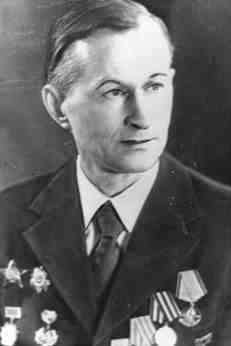
Boris Nikolaevich Malinovsky
V. Glushkov himself (through his works and lectures) plays no small role in the scientific aspirations of Z. L. Rabinovich. He is allocated a laboratory and from
practical development, he proceeds to conduct independent scientific research in the field of computer theory (Computer Science), which began to gain momentum at that time. Rabinovich's scientific group defines the subject of computer theory, which was included in the Encyclopedia of Cybernetics and answered at least two disciplines from Computer Science. Thanks to Z. L. Rabinovich, the concept of a hierarchical process of information processing in a computer appears, the interactions between its levels, which are divided into three groups - the elemental structure, the algorithmic structure and the computer architecture.
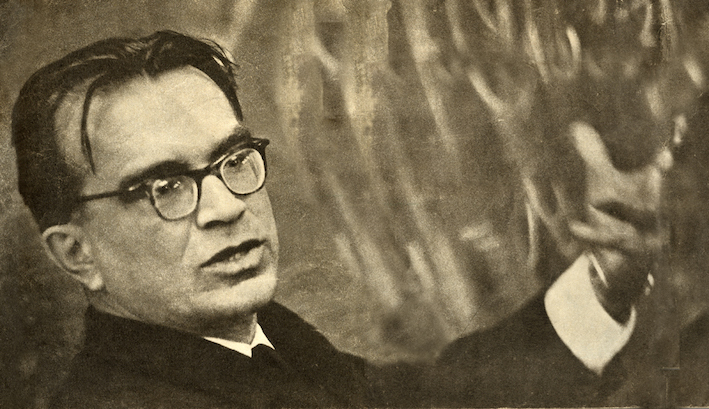
Glushkov Victor Mikhailovich
The results of this work were presented in "Elementary operations in computers" and "Fundamentals of the theory of computer element structures". They showed the structural process of information processing in computers at its two lower levels (operations on numbers and on words).
The monograph “Elementary operations in computers” was a success in higher educational institutions (civil, military, including refresher courses), and was considered a “teacher’s reading book”. The book is gaining popularity not only in our country, but also abroad.
The desire to learn new things and develop switches Zinovy L'vovich's interest to the development of computer machine intelligence. This concept, according to L. N. Korolev, characterizing “the mathematical abilities of machines that are especially significant for the efficiency of their use, especially in the mode of interactive human-machine interaction,” will be introduced by V. M. Glushkov and Z. L. Rabinovich and will become encyclopedic.
Rabinovich takes an active part in experimental developments related to the principle of the use of high-level language (HLM). V. Glushkov, Z. Rabinovich, S Mikhnovsky, A. Stogny, V. Gladun, V. Shemansky submitted their first application for a high-performance machine based on this principle in 1962. But the usefulness of these works will be recognized only in 1968, when it becomes known about the appearance of such machines abroad. And the author's certificate will be issued only by that time.
Then the principle of the structural interpretation of the HLM will perfectly manifest itself in small microprogram machines of the MIR series, and the department of Z. L. Rabinovich will continue to develop a universal high-performance computer, called "Ukraine", with an internal algol-like language, and additional tools for automatic organization of the computational process. The principle of structural interpretation of the NCI was taken up in a number of highly authoritative organizations, of which ITM and VT named for them are especially indicative. S.A. Lebedeva, who applied it as one of the two fundamental principles of building the "Elbrus", the first domestic supercomputer that received excellent reviews abroad. Thus, the very strategy of creating a computer was changed, and the principle of bringing them closer to users was no longer questioned, but developed in every way.
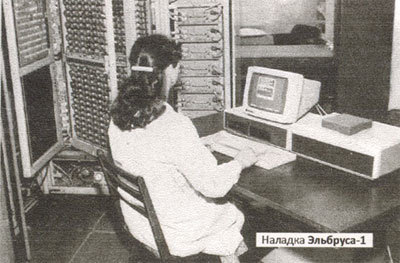
In the spring of 1969, when Z. L. Rabinovich was 50 years old, as a result of these works, he was defended by a doctor of technical sciences. In 1970, Rabinowitz was presented to receive the Prize. S.A. Lebedeva of the Academy of Sciences of the Ukrainian SSR together with B.N. Malinovsky and V.A. Melnikov.
Since 1987, Zinovy Lvovich has ceased to lead the department, but it remains to work, without ceasing to make new proposals, both in the field of computer technology and in the scientific and educational direction of artificial intelligence.
In particular, he notes:
The activities of this person covered many areas. So one of the directions of his intellectual search was related to the sphere of human thinking. He was interested in structural mechanisms and processes of thinking, mainly creative. He wondered what the process of creative thinking is from the point of view of information processing and what are the possibilities of its formalization.
On this subject, he delivered a report in London at the World Cybernetics Congress. The report aroused interest. And later he was offered to repeat it at a conference on the philosophical problems of cybernetics, as well as to participate in the co-authorship of the philosophical collective monograph “Management, Information, Intellect” edited by A.I. Berg and others.

The monograph “Management, Information, Intelligence” edited by A.I. Berg and others.
Developing this topic further, Z. L. Rabinovich proceeds to understand the nature of thinking in general and makes a report at one of the prestigious symposia. It was attended by the best specialists in neurophysiology and artificial intelligence, who accepted the Rabinovich hypotheses as a new approach to the study of the mechanisms and processes of thinking. With his report he filled the “niche” between the constructions of psychologists at the level of mental functions of the brain and neurophysiologists - at the level of chemical reactions in the brain. And in 1979, according to his report, an article was published in the journal Cybernetics, which interested not only cybernetics but also neurophysiologists and psychologists. The article includes the list of recommended literature on psychology, and Zinovy Lvovich is invited to make a plenary report at the All-Union Congress of Psychologists.
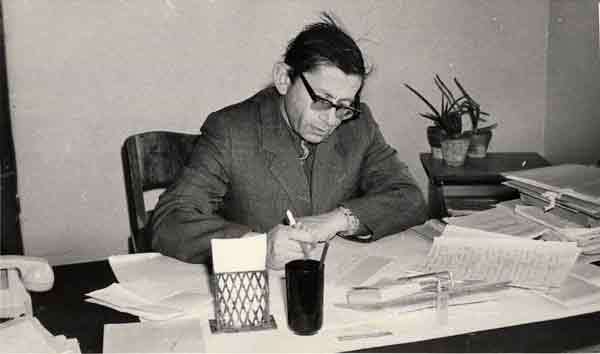
Zinovy Lvovich had a great experience, more than 60 years of scientific activity, and the ability to communicate with people. He always shared tips with his students on the further development of research. Under his leadership, 43 Ph.D. theses were prepared and defended, later 11 of these candidates became doctors of science and scientists known all over the world.
Zinovy Lvovich did not become on November 2, 2009 due to the increased arrhythmia, which he had long suffered. But the name of this outstanding person with the glory of a prominent scientist in the field of computer science and technology is known both in the expanses of the post-Soviet space and beyond.

The beginning of the way
It all started on the night of August 1, 1918 in the city of Kiev, when the boy Zinovy was born in the family of a doctor and nurse. After the birth of their son, parents rent an apartment on Demeevka (then, the outskirts of Kiev). The father, as a doctor, enjoys great prestige and love of the proletariat. Education, as Zinovy L'vovich recalled later, was “classical and, at the same time, multi-polar, in which the“ classics ”mixed with the new Soviet trends.
')
Zinovy Lvovich recalls:
My father hired a governess who taught me up to preschool age with three other children, but at the same time she lived with us and mainly dealt with me.
Subsequently, the pro-Soviet upbringing in the family, then the school principles “as it should be” and the tendency to reasoning and practical comprehension from early childhood, will serve as a choice to devote themselves to creative research activities.
After graduation, Rabinovich enters the Kiev Polytechnic Institute, which graduated with honors in 1941. Despite the fact that on the night of June 22 Kiev was bombed, in the morning he was on a call from the institute going to defend his graduation project. During his diploma defense, an air-raid alarm sounds and almost the entire commission moves to an air-raid shelter, with the exception of a few people who listen to and evaluate the work as “excellent”.

Kiev Polytechnic Institute
In a couple of days, according to the mobilization, Zinovy Lvovich is sent to the defense enterprise at the new MAP plant in Kirov. He gets into the serial design bureau (SKB), where he translates product documentation into working documentation in accordance with factory standards, assists in the development of these products in serial production and accompanies their planned production right up to military acceptance. And all this takes place in extremely intense mode due to wartime conditions. At the beginning of the war, during the development of products, designers were even equipped with sleeping places in the red corners of the shops, so that they could be at the factory at night. The product, which led Zinovy Lvovich and made him redesign and modernization, was not only high quality, but also the highest quality among the whole complex of products of the plant, which allowed him to improve aviation equipment. Later he will be awarded the medal "For Valiant Labor in the Great Patriotic War of 1941-1945."

Medal "For Valiant Labor in the Great Patriotic War of 1941-1945"
After the end of the war, the plant still works for some time in the same mode, but then peaceful production is added to production, the former enormous tension is reduced, the work rhythm becomes calm, more free time appears. At the same time, Zinovy Lvovich has a desire for scientific work. Just at this time, Stalin issued an order for unhindered leave from defense plants and from the army of persons admitted to the postgraduate and adjunct courses. And it helps him make the final decision.
Work with Lebedev
In 1947, Rabinovich returned to Kiev, enrolling in graduate school at the Institute of Thermal Power Engineering of the Academy of Sciences of the Ukrainian SSR, from which, on the arrival of S. A. Lebedev, in 1947 the Institute of Electrical Engineering distinguished itself.
A production worker from distant Kirov immediately passes his candidate exams. This makes a favorable impression. He especially liked Sergei Alekseevich Lebedev and was admitted to him as a graduate school. But at the factory, Zinoviy Lvovich was persuaded to work for another year and was released only at the insistence of the chief military representative. The laboratory, to which Rabinovich came, was engaged in the development of basic tube components of electronic automatics, but he was immediately introduced by Sergey Alekseevich into the beginning contract work on the creation of an installation of semi-natural modeling of aircraft systems. The installation was to consist of a platform with three degrees of freedom, an analog computer that simulates the movement of the aircraft, and a tracking precision system that accurately transmits impacts from the model to the engine of the platform. Zinoviy Lvovich had no special group as such, but he was helped by I. P. Okulov, N. I. Furman and R. Ya. Chernyak.
The idea and the main principles of the construction of this installation were highly appreciated in the journal Automation and Remote Control as an outstanding achievement by S. A. Lebedev. Much later, Rabinovich Z. L., with details previously subject to secrecy, will set forth this work in his writings about S. A. Lebedev, to whom he treated with great respect and love. And as he himself wrote in his memoirs, “in addressing him I felt as if I was addressing God, as a believing person does in his mind, without embarrassment, directly.”
Development of MESM and SESM
Beginning in 1948, together with work on the installation, S. Lebedev entrusts Rabinovich Z.L. other, auxiliary works, when creating the first Soviet computer MESM (Small electronic counting machine). This is the creation of a stand for the selection of lamps with the same characteristics, systems for automatic stabilization of the lamp heat, etc.
MESM parameters:
- binary with a fixed comma before the senior level of the counting system;
- 17 digits (16 plus one per character);
- RAM capacity: 31 for numbers and 63 for teams;
- the capacity of the functional device: similar RAM;
- three-address command system;
- calculations performed: four simplest operations (addition, subtraction, division, multiplication), comparison with sign, shift, comparison - in absolute value, addition of commands, transfer of control, transfer of numbers from the magnetic drum, etc .;
ROM type: trigger cells with the option of using a magnetic drum;
- data entry system: sequential with control through the programming system;
- monoblock universal arithmetic unit of parallel action on trigger cells.
- 17 digits (16 plus one per character);
- RAM capacity: 31 for numbers and 63 for teams;
- the capacity of the functional device: similar RAM;
- three-address command system;
- calculations performed: four simplest operations (addition, subtraction, division, multiplication), comparison with sign, shift, comparison - in absolute value, addition of commands, transfer of control, transfer of numbers from the magnetic drum, etc .;
ROM type: trigger cells with the option of using a magnetic drum;
- data entry system: sequential with control through the programming system;
- monoblock universal arithmetic unit of parallel action on trigger cells.
And from the end of 1949, he joined the development of electronic computing equipment - high-speed elemental structures, sequential arithmetic devices, etc., for which he was allocated a small group of engineers and technicians. Also, Rabinovich is given a separate work on the development of a digital printing output device, in which I. T. Parkhomenko took an active part. The development of this device related specifically to the creation of the MESM itself.
To create the MESM it was necessary to have a room of about 150 square meters And about the same - for generators, batteries, control automation. It was necessary to place workshops and other services somewhere. Finding such a building in Kiev destroyed by war was very difficult. This room was allocated near Kiev, in the building of the former hotel at the monastery in Feofaniya. Despite the fact that the building was in disrepair, it was quickly repaired. The MESM was created on the first two floors, and the third hostel was arranged for employees. Work was in full swing. Every day from Kiev to the village of employees drove a dedicated bus. But at 17 o'clock he was leaving back. Therefore, people stayed at work for several days or even weeks. Z.L. Rabinovich, who returned home only on weekends, was no exception.

The building in the suburbs of Kiev - Feofaniya, where Lebedev's laboratory was located and the MESM was built
On November 6, 1950, the trial operation of MESM begins, and its transformation from a working model into a regularly working sample. The solution of the control problem was recorded by a special act, in which, after the signature of S. A. Lebedev and E. A. Shkabary, there was the signature of Rabinovich himself. But the car was still being finalized and only on December 25, 1951 was handed over to the state commission. Lebedev recommends Rabinovich to lead the development of the SECM, and he comes to Kiev to advise on these developments.
Development of SESM
For 3 years (1948 - 1951), the MESM universal machine was created, and a year more was needed to create the SESM, which was commissioned in 1956 and became the first computer in Europe with a vector processor.
In SESM a whole range of new products was applied for that time. It was used by customers for solving a number of tasks and entered with the MESM into the main equipment of the Computing Center of the Academy of Sciences of the Ukrainian SSR, and then was transferred for training purposes to the radio engineering college.

Specialized electronic counting machine SESM
Z. L. Rabinovich believed that only after the SESM he fully asserted himself as a high-class specialist in the field of digital computing, and this circumstance, of course, greatly influenced his further scientific activities.
Afterwards, KVIAVU addresses Z.L. Rabinovich with a proposal to conduct a search for a digital target detection system using radar data. This proposal is of interest to him and, together with B. N. Malinovsky, they begin research. V. Glushkov, in cooperation with the Ministry of Defense, is responsible for the scientific leadership of this work. The work is carried out in two directions: primary processing of radar information, automatic capture of the target and its tracking.

Boris Nikolaevich Malinovsky
V. Glushkov himself (through his works and lectures) plays no small role in the scientific aspirations of Z. L. Rabinovich. He is allocated a laboratory and from
practical development, he proceeds to conduct independent scientific research in the field of computer theory (Computer Science), which began to gain momentum at that time. Rabinovich's scientific group defines the subject of computer theory, which was included in the Encyclopedia of Cybernetics and answered at least two disciplines from Computer Science. Thanks to Z. L. Rabinovich, the concept of a hierarchical process of information processing in a computer appears, the interactions between its levels, which are divided into three groups - the elemental structure, the algorithmic structure and the computer architecture.

Glushkov Victor Mikhailovich
The results of this work were presented in "Elementary operations in computers" and "Fundamentals of the theory of computer element structures". They showed the structural process of information processing in computers at its two lower levels (operations on numbers and on words).
The monograph “Elementary operations in computers” was a success in higher educational institutions (civil, military, including refresher courses), and was considered a “teacher’s reading book”. The book is gaining popularity not only in our country, but also abroad.
The desire to learn new things and develop switches Zinovy L'vovich's interest to the development of computer machine intelligence. This concept, according to L. N. Korolev, characterizing “the mathematical abilities of machines that are especially significant for the efficiency of their use, especially in the mode of interactive human-machine interaction,” will be introduced by V. M. Glushkov and Z. L. Rabinovich and will become encyclopedic.
Introduction of high level language (HLL)
Rabinovich takes an active part in experimental developments related to the principle of the use of high-level language (HLM). V. Glushkov, Z. Rabinovich, S Mikhnovsky, A. Stogny, V. Gladun, V. Shemansky submitted their first application for a high-performance machine based on this principle in 1962. But the usefulness of these works will be recognized only in 1968, when it becomes known about the appearance of such machines abroad. And the author's certificate will be issued only by that time.
Then the principle of the structural interpretation of the HLM will perfectly manifest itself in small microprogram machines of the MIR series, and the department of Z. L. Rabinovich will continue to develop a universal high-performance computer, called "Ukraine", with an internal algol-like language, and additional tools for automatic organization of the computational process. The principle of structural interpretation of the NCI was taken up in a number of highly authoritative organizations, of which ITM and VT named for them are especially indicative. S.A. Lebedeva, who applied it as one of the two fundamental principles of building the "Elbrus", the first domestic supercomputer that received excellent reviews abroad. Thus, the very strategy of creating a computer was changed, and the principle of bringing them closer to users was no longer questioned, but developed in every way.

Interdisciplinary research
In the spring of 1969, when Z. L. Rabinovich was 50 years old, as a result of these works, he was defended by a doctor of technical sciences. In 1970, Rabinowitz was presented to receive the Prize. S.A. Lebedeva of the Academy of Sciences of the Ukrainian SSR together with B.N. Malinovsky and V.A. Melnikov.
Since 1987, Zinovy Lvovich has ceased to lead the department, but it remains to work, without ceasing to make new proposals, both in the field of computer technology and in the scientific and educational direction of artificial intelligence.
In particular, he notes:
The machine according to the concept should be widely universal in the sense of effective solution of both traditional computing tasks and processing of complex data structures.
The activities of this person covered many areas. So one of the directions of his intellectual search was related to the sphere of human thinking. He was interested in structural mechanisms and processes of thinking, mainly creative. He wondered what the process of creative thinking is from the point of view of information processing and what are the possibilities of its formalization.
On this subject, he delivered a report in London at the World Cybernetics Congress. The report aroused interest. And later he was offered to repeat it at a conference on the philosophical problems of cybernetics, as well as to participate in the co-authorship of the philosophical collective monograph “Management, Information, Intellect” edited by A.I. Berg and others.

The monograph “Management, Information, Intelligence” edited by A.I. Berg and others.
Developing this topic further, Z. L. Rabinovich proceeds to understand the nature of thinking in general and makes a report at one of the prestigious symposia. It was attended by the best specialists in neurophysiology and artificial intelligence, who accepted the Rabinovich hypotheses as a new approach to the study of the mechanisms and processes of thinking. With his report he filled the “niche” between the constructions of psychologists at the level of mental functions of the brain and neurophysiologists - at the level of chemical reactions in the brain. And in 1979, according to his report, an article was published in the journal Cybernetics, which interested not only cybernetics but also neurophysiologists and psychologists. The article includes the list of recommended literature on psychology, and Zinovy Lvovich is invited to make a plenary report at the All-Union Congress of Psychologists.

Zinovy Lvovich had a great experience, more than 60 years of scientific activity, and the ability to communicate with people. He always shared tips with his students on the further development of research. Under his leadership, 43 Ph.D. theses were prepared and defended, later 11 of these candidates became doctors of science and scientists known all over the world.
Zinovy Lvovich did not become on November 2, 2009 due to the increased arrhythmia, which he had long suffered. But the name of this outstanding person with the glory of a prominent scientist in the field of computer science and technology is known both in the expanses of the post-Soviet space and beyond.
Source: https://habr.com/ru/post/395779/
All Articles